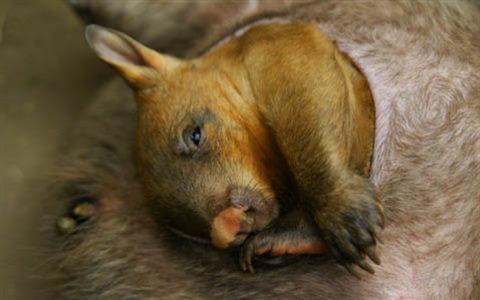Research

Rockhampton Zoo is passionate about working with universities and post graduate students to better understand the animal kingdom in a non-threatening, nurturing environment. Here's a list of studies conducted over recent years.
Chimpanzee vocalisations research
CQUniversity, Australia
2018
CQUniversity partnered with Rockhampton Zoo to capture chimpanzee vocalisations as part of their study into Source-filter theory; the current theory for how vocalisations are produced in humans and other mammals. The team strategically placed sound recorders around the enclosure that captured data 24 hours per day, seven days per week. It was a non-invasive, passive study on our chimpanzee family. The results taken from this study have been used for comparative purposes in a wider study into human vocalisation.
Food preferences of captive southern hairy-nosed wombats (Lasiorhinus latifrons)
CQUniversity, Australia
Yvette Fenning BMUS, PTCL, MASc
This research examined food preferences of captive wombats when offered a selection of common captive wombat diets used by zoos and wildlife carers Australia-wide. Although there has been research on the food preferences of many domestic and captive wild animals, there has been no study on the food preferences of captive southern hairy-nosed wombats. A review of the research has highlighted a lack of knowledge of wombat food preferences and that feeding regimens for captive wombats may be inadequate. The hypothesis for this study was that captive southern hairy-nosed wombats would prefer natural familiar foods to unnatural unfamiliar foods. The research was conducted at the Rockhampton Zoo Wombat Research Centre and involved a series of four food preference experiments (carrot, kangaroo grass, guinea grass and sweet potato). The results showed that this group of captive wombats preferred natural foods regardless of familiarity and that given the choice of pellets (control test food item) and one other food item, grasses were preferred even if they were unfamiliar. Increasing opportunities for food choice among individuals will contribute to an enriched nutritional environment and lead to improved welfare of the animals.
Can chimpanzees innovate to make a tool on their own?
University of Queensland, Australia
Karrie Neldner, Associate Professor Mark Nielsen and Professor Thomas Suddendorf
2016 to 2017
Chimpanzees are very good at using tools in the wild (e.g. they use tools to fish out termites from nests, and make sponges to collect water from tree hollows). However, we do not know much about their capacity to make a new kind of tool. In this study, chimpanzees Cassie and Holly were given the opportunity to make novel tools to get food. They needed to either add materials together, bend an object into shape, or remove unhelpful parts of an object to create an effective tool. While Cassie did not demonstrate competence at this, Holly was able to add, reshape and subtract to produce the required tool. Based on this knowledge, the researchers plan to conduct a larger study at a chimpanzee sanctuary in the USA in 2019 as part of Karri Neldner’s Fulbright scholarship.
Can chimpanzees remember where to find multiple hidden targets even after a delay?
University of Queensland, Australia
Adam Bulley, Dr Jonathan Redshaw and Professor Thomas Suddendorf
2018
In everyday life, we must often remember to do things after a delay, like remembering to take a cake out of the oven. This ability relies on what psychologists call object permanence (knowing the cake still exists when you can no longer see it), and prospective memory (remembering to perform the intention you had earlier). In previous studies at Rockhampton Zoo, researchers have demonstrated that chimpanzees do have object permanence and can reason about hidden movements. This study explored whether chimpanzees can remember the location of multiple hidden objects even after a delay. Researchers hid grapes under an array of cups and gave the chimpanzees the opportunity to select hiding locations after a short time has elapsed.
Can chimpanzees prepare for two alternative future outcomes?
University of Queensland, Australia
Dr Jon Redshaw and Professor Thomas Suddendorf
2014 to 2017
A series of studies examined chimpanzees’ ability to simultaneous prepare for two alternative future outcomes. This behaviour is widespread in humans, for example a family will arrange a relaxing overseas holiday, but at the same time will also book travel insurance just in case things take a turn for the worse. In the experiments, a researcher dropped a grape into a tube apparatus, and the grape could exit from either the left or right side of the tube. The chimpanzees typically covered only one exit when preparing to catch the grape, unlike four year old human children who typically covered both exits. However, three of the chimpanzees (Holly, Samantha and Alon) eventually covered two exits on several trials, showing that they had the physical capacity to prepare for these two possible future outcomes.
Research publications: